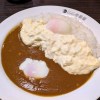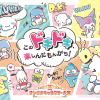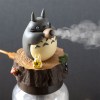These adorable clips and characters will help you memorise kanji symbols and make you smile at the same time.
Kanji is often considered one of the hardest things for students of the Japanese language to master. With thousands of characters commonly used in everyday life, memorising the Japanese language system adopted from China can be a daunting challenge for even the most diligent of pupils, so anything that helps to brighten up the task and make it a little more exciting is always a welcome distraction.
A new Instagram account set up by Tokyo animator Ayako Hiroki is making news for doing exactly that, as it includes a series of stop-motion videos that showcase a variety of different kanji characters with cute, endearing and memorable scenes.
Called “Kanjigram”, the short videos in the collection began appearing online at the end of June, with the first clip paying homage to the character 字 (“azana”/”aza”/”ji”), which makes up the second half of the word “kanji” (漢字).
▼ The clever animation splits the character into its two parts, or radicals,
showing a child (子) throwing a roof (宀) over its head.
▼ Next up is the kanji for “tree” (木).
▼ Seeds are used to create the kanji for “seed” (種).
One of the most adorable clips in the collection is this one, which depicts an umeboshi pickled plum hobbling over to a rice ball with his walking stick, before throwing himself onto it to create the word “plum” (梅).
▼ Another cute clip pays homage to the kanji for “violet” (紫).
▼ While this one helps us remember the kanji for “half” (半).
The video for the word “peach” (桃) draws on the legend of “Momotaro” or “Peach Boy” for its design, with the hero and his animal friends defeating the monster at the end of the clip, just as they do in the Japanese myth.
“Summer” (夏) features some warm-weather motifs, like a blow-up paper goldfish and octopus, to help cool you down while you study.
▼ There’s also a beautiful depiction of time (時) in the collection.
Having just appeared online less than a month ago, there are plenty more kanji and videos to come, so be sure to follow the account if you want to keep expanding on your Japanese skills.
In the meantime, if you need more inspiration to help memorise all the different kanji characters, you might want to take a look at this new book, which helps you learn kanji with the magical power of poop!
Source: Net Lab
Featured image: Instagram/kanjigram_a

 Matt Kuwata stuns the world with transformation from Japanese boy to living doll 【Photos】
Matt Kuwata stuns the world with transformation from Japanese boy to living doll 【Photos】 Latest Japanese Instagram trend: photos of baby butts covered up with peaches【Pics】
Latest Japanese Instagram trend: photos of baby butts covered up with peaches【Pics】 Japanese fashion brand Keiko Tagai turns beautiful old kimono into stylish hats
Japanese fashion brand Keiko Tagai turns beautiful old kimono into stylish hats These creative, fanciful post boxes from Japan will delight you in so many ways【Photos】
These creative, fanciful post boxes from Japan will delight you in so many ways【Photos】 Cute cat is the star Tsum Tsum character in this Japanese home!
Cute cat is the star Tsum Tsum character in this Japanese home! Foreigner’s request for help in Tokyo makes us sad for the state of society
Foreigner’s request for help in Tokyo makes us sad for the state of society Should you add tartar sauce to Japanese curry rice? CoCo Ichi makes diners an unusual offer
Should you add tartar sauce to Japanese curry rice? CoCo Ichi makes diners an unusual offer Seaside scenery, history, and so many desserts on Yokohama’s Akai Kutsu【Japan Loop Buses】
Seaside scenery, history, and so many desserts on Yokohama’s Akai Kutsu【Japan Loop Buses】 Japanese city loses residents’ personal data, which was on paper being transported on a windy day
Japanese city loses residents’ personal data, which was on paper being transported on a windy day Ghibli Park now selling “Grilled Frogs” from food cart in Valley of Witches
Ghibli Park now selling “Grilled Frogs” from food cart in Valley of Witches Red light district sushi restaurant in Tokyo shows us just how wrong we were about it
Red light district sushi restaurant in Tokyo shows us just how wrong we were about it Harajuku Station’s beautiful old wooden building is set to return, with a new complex around it
Harajuku Station’s beautiful old wooden building is set to return, with a new complex around it Akihabara pop-up shop sells goods made by Japanese prison inmates
Akihabara pop-up shop sells goods made by Japanese prison inmates Osaka governor suggests lowering voting age to 0 to curb population decline
Osaka governor suggests lowering voting age to 0 to curb population decline The 2023 Sanrio character popularity ranking results revealed
The 2023 Sanrio character popularity ranking results revealed McDonald’s new Happy Meals offer up cute and practical Sanrio lifestyle goods
McDonald’s new Happy Meals offer up cute and practical Sanrio lifestyle goods Japanese ramen restaurants under pressure from new yen banknotes
Japanese ramen restaurants under pressure from new yen banknotes French Fries Bread in Tokyo’s Shibuya becomes a hit on social media
French Fries Bread in Tokyo’s Shibuya becomes a hit on social media Studio Ghibli releases new action figures featuring Nausicaä of the Valley of the Wind characters
Studio Ghibli releases new action figures featuring Nausicaä of the Valley of the Wind characters New private rooms on Tokaido Shinkansen change the way we travel from Tokyo to Kyoto
New private rooms on Tokaido Shinkansen change the way we travel from Tokyo to Kyoto Tokyo Tsukiji fish market site to be redeveloped with 50,000-seat stadium, hotel, shopping center
Tokyo Tsukiji fish market site to be redeveloped with 50,000-seat stadium, hotel, shopping center Beautiful Ghibli sealing wax kits let you create accessories and elegant letter decorations【Pics】
Beautiful Ghibli sealing wax kits let you create accessories and elegant letter decorations【Pics】 Studio Ghibli releases Kiki’s Delivery Service chocolate cake pouches in Japan
Studio Ghibli releases Kiki’s Delivery Service chocolate cake pouches in Japan New definition of “Japanese whiskey” goes into effect to prevent fakes from fooling overseas buyers
New definition of “Japanese whiskey” goes into effect to prevent fakes from fooling overseas buyers Our Japanese reporter visits Costco in the U.S., finds super American and very Japanese things
Our Japanese reporter visits Costco in the U.S., finds super American and very Japanese things All-you-can-drink Starbucks and amazing views part of Tokyo’s new 170 meter-high sky lounge
All-you-can-drink Starbucks and amazing views part of Tokyo’s new 170 meter-high sky lounge More foreign tourists than ever before in history visited Japan last month
More foreign tourists than ever before in history visited Japan last month New Pokémon cakes let you eat your way through Pikachu and all the Eevee evolutions
New Pokémon cakes let you eat your way through Pikachu and all the Eevee evolutions Disney princesses get official manga makeovers for Manga Princess Cafe opening in Tokyo
Disney princesses get official manga makeovers for Manga Princess Cafe opening in Tokyo Sales of Japan’s most convenient train ticket/shopping payment cards suspended indefinitely
Sales of Japan’s most convenient train ticket/shopping payment cards suspended indefinitely Sold-out Studio Ghibli desktop humidifiers are back so Totoro can help you through the dry season
Sold-out Studio Ghibli desktop humidifiers are back so Totoro can help you through the dry season Japanese government to make first change to romanization spelling rules since the 1950s
Japanese government to make first change to romanization spelling rules since the 1950s Ghibli founders Toshio Suzuki and Hayao Miyazaki contribute to Japanese whisky Totoro label design
Ghibli founders Toshio Suzuki and Hayao Miyazaki contribute to Japanese whisky Totoro label design Doraemon found buried at sea as scene from 1993 anime becomes real life【Photos】
Doraemon found buried at sea as scene from 1993 anime becomes real life【Photos】 Tokyo’s most famous Starbucks is closed
Tokyo’s most famous Starbucks is closed One Piece characters’ nationalities revealed, but fans have mixed opinions
One Piece characters’ nationalities revealed, but fans have mixed opinions We asked a Uniqlo employee what four things we should buy and their suggestions didn’t disappoint
We asked a Uniqlo employee what four things we should buy and their suggestions didn’t disappoint Princesses, fruits, and blacksmiths: Study reveals the 30 most unusual family names in Japan
Princesses, fruits, and blacksmiths: Study reveals the 30 most unusual family names in Japan Talented illustrator gives cast of Dragon Ball characters amazing samurai warlord makeovers
Talented illustrator gives cast of Dragon Ball characters amazing samurai warlord makeovers Japanese internet has brief but passionate love affair with hot Chinese cosplayer Huang Jingxiang
Japanese internet has brief but passionate love affair with hot Chinese cosplayer Huang Jingxiang Sakura in Japan 2019: The best spots for hanami cherry blossom viewing
Sakura in Japan 2019: The best spots for hanami cherry blossom viewing “Watermelon dress” trend sweeps Japan 【Photos】
“Watermelon dress” trend sweeps Japan 【Photos】 Have coffee with adorable piggies at Tokyo’s brand-new micro pig cafe in trendy Harajuku
Have coffee with adorable piggies at Tokyo’s brand-new micro pig cafe in trendy Harajuku This Gunpla builder designs amazingly life-like Gundam dioramas out of plastic model kits
This Gunpla builder designs amazingly life-like Gundam dioramas out of plastic model kits Here’s a little tip from a Buddhist monk for anyone spooked by cemeteries at night
Here’s a little tip from a Buddhist monk for anyone spooked by cemeteries at night Starbucks Japan now has matcha pudding on the menu
Starbucks Japan now has matcha pudding on the menu Japanese restaurant serves up noodles in stunning ice cube bowls
Japanese restaurant serves up noodles in stunning ice cube bowls Amazingly creative sculptures appear on streets around the country as heavy snowfall hits Japan
Amazingly creative sculptures appear on streets around the country as heavy snowfall hits Japan Japan gets swept up in creative new “cherry toast” trend 【Photos】
Japan gets swept up in creative new “cherry toast” trend 【Photos】 Early-blooming sakura cherry blossoms create pink-tinged wonderlands in Japan
Early-blooming sakura cherry blossoms create pink-tinged wonderlands in Japan Sticking cheeseburgers through soft drink straws now a thing on Japanese Instagram 【Pics】
Sticking cheeseburgers through soft drink straws now a thing on Japanese Instagram 【Pics】 Kanazawa’s historic “ninja temple” is packed full of hidden rooms, pitfalls, and more
Kanazawa’s historic “ninja temple” is packed full of hidden rooms, pitfalls, and more Oldest man in the world celebrates his birthday following recognition from Guinness World Records
Oldest man in the world celebrates his birthday following recognition from Guinness World Records
Leave a Reply